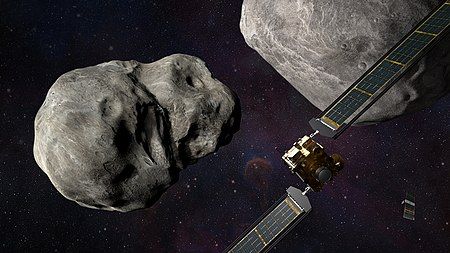NASA’s Dart will hit an asteroid in space

A few minutes every morning is all you need.
Stay up to date on the world's Headlines and Human Stories. It's fun, it's factual, it's fluff-free.
If you watched “Don’t Look Up,” and walked away from it having laughed but also trying to hide the fact that you now worry about asteroids hitting the Earth, you’re not alone. In fact, the folks over at NASA are light years ahead of you (pun absolutely intended).
The mission is called DART, which stands for Double Asteroid Redirection Test. “We know asteroids have hit us in the past,” said astronomer Alan Fitzsimmons, a Queen’s University Belfast professor. “These impacts are a natural process and they are going to happen in the future. We would like to stop the worst of them. The problem is that we have never tested the technology which will be needed to do that. That is the purpose of Dart.”
All told, the mission is pretty simple. Basically, NASA sent the Dart robot spacecraft up back in November. Now it’s working on building up some serious speed, so it can crash into the asteroid and attempt to change its direction. A few days out from the impact, a small satellite will separate from the Dart to send pics back to Earth. And then, there’s impact day, when the Dart will hit the target at about four miles per second.
Now to be clear, this is just a test. NASA isn’t looking to blow an asteroid into tiny pieces but rather to see the effects of slamming a satellite into a big rock in space. This particular asteroid is in orbit around a much bigger one, so the question is how much the orbit changes when you hit it. The experiment is scheduled to brace for impact on September 27.
In the best case scenario, assuming everything goes to plan, scientists will have learned a lot about ways to protect the Earth from devastating asteroid hits in the future, and American taxpayers will only be out US$330 million. Individually, that’s probably a lot cheaper than buying a seat on one of Elon Musk’s future escape pods.




Comments ()